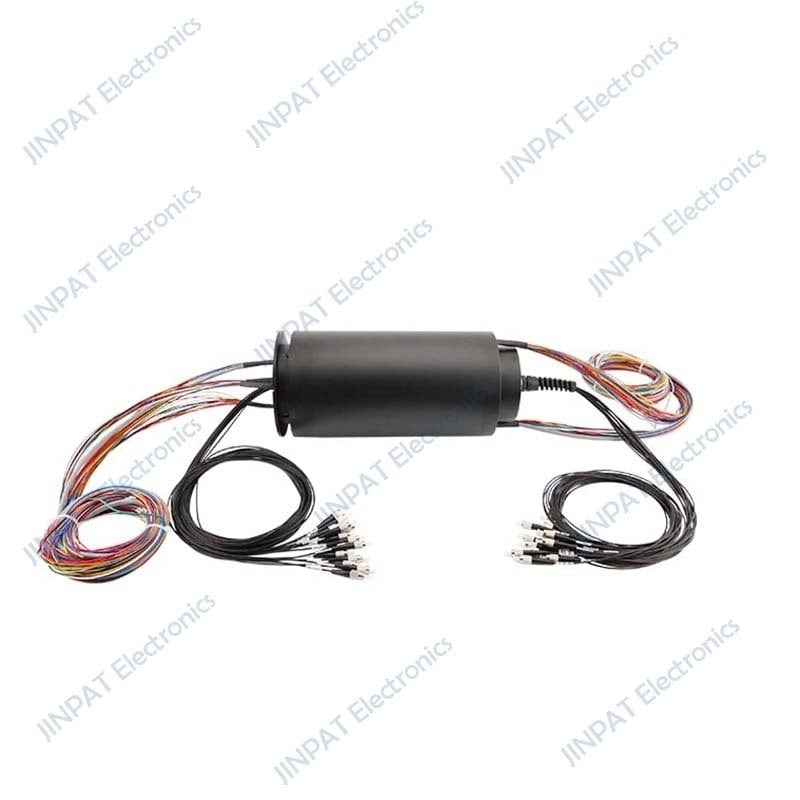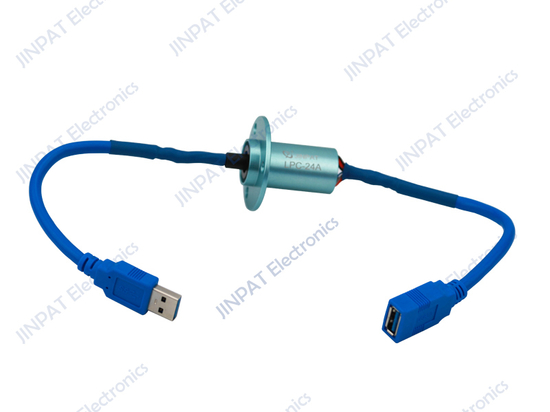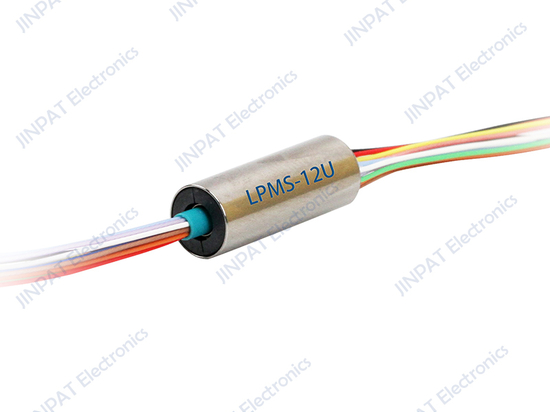
#Product Trends
Technical Characteristics of Various Fiber Optic Slip Ring Models by JINPAT
Technical Characteristics of Various Fiber Optic Slip Ring Models by JINPAT
JINPAT is a high-tech enterprise specializing in the research, development, production, and sales of high-end slip rings. This year marks the 28th year of JINPAT's commitment to the slip ring industry. JINPAT has always focused on providing cost-effective solutions for 360° rotation electrical conduction and signal transmission across various industries. They excel in the development of high-difficulty slip rings, capable of integrating multiple signals, currents, and fluid paths into a single slip ring while meeting high standards for protection, vibration resistance, and impact resistance.
Addressing the demand for 360° rotation signal transmission in the automation sector, JINPAT has developed various models of signal slip rings. Apart from specialized multi-channel USB 2.0/3.0 signal slip rings, they have also developed high-definition video signal, CAN signal, control signal, and fiber optic signal slip rings based on current slip ring technology. These high-precision conducting slip rings are technically advanced products, with optoelectronic integrated conducting slip rings being the most challenging to develop. JINPAT's optoelectronic integrated slip rings are the perfect companion for high-speed, lossless signal transmission in precision instruments and high-end automation equipment.
Taking the latest developed slip ring model, LPT000-0910-3E3-FO04, as an example, this integrated slip ring features conductivity, multi-channel signal transmission, and integrated fiber optic paths. It operates at 480V and can transmit 3 sets of gigabit Ethernet signals. Additionally, it integrates four channels of fiber optics with a wavelength range between 1310nm and 1590nm, an insertion loss of less than 4db, and a fiber bending radius of 30mm. It also boasts excellent temperature resistance and a robust housing, capable of operating under temperatures ranging from -45℃ to +80℃. The housing is made of aluminum alloy, combining lightweight and durability, ensuring reliable long-term operation of the equipment.
In comparison, the LPT000-1210-39S-01E3-12FO model has even lower insertion loss and features 12 channels of fiber optic paths with a lifespan exceeding 10 million rotations. It operates under temperatures ranging from -30℃ to +80℃ and offers easy installation.
Within JINPAT's optoelectronic integrated slip rings, the LPC-1F series finds broader applications, forming an independent product line. This series features compact design, with a diameter of only 24.8mm, significantly saving installation space on terminal platforms. While having a single fiber optic channel, it also integrates 12, 24, 30, and 36 channels of current paths. Compared to single-channel fiber optic slip rings, this slip ring not only addresses signal transmission issues but also provides power transmission paths for customers.
Moreover, the pricing of this series is almost identical to that of single-channel fiber optic slip rings, making it a cost-effective high-precision conducting slip ring. The JINPAT LPC-1F series fiber optic slip rings have a return loss greater than 45db, operating wavelength between 850~1550nm, insertion loss less than 2db with a typical value of 0.5db, and insertion loss variation of +/-0.25db with a typical value of +/-0.15db. Fiber types can be selected as single-mode or multi-mode, and connector types include ST/FC/SC/LC, among others.





